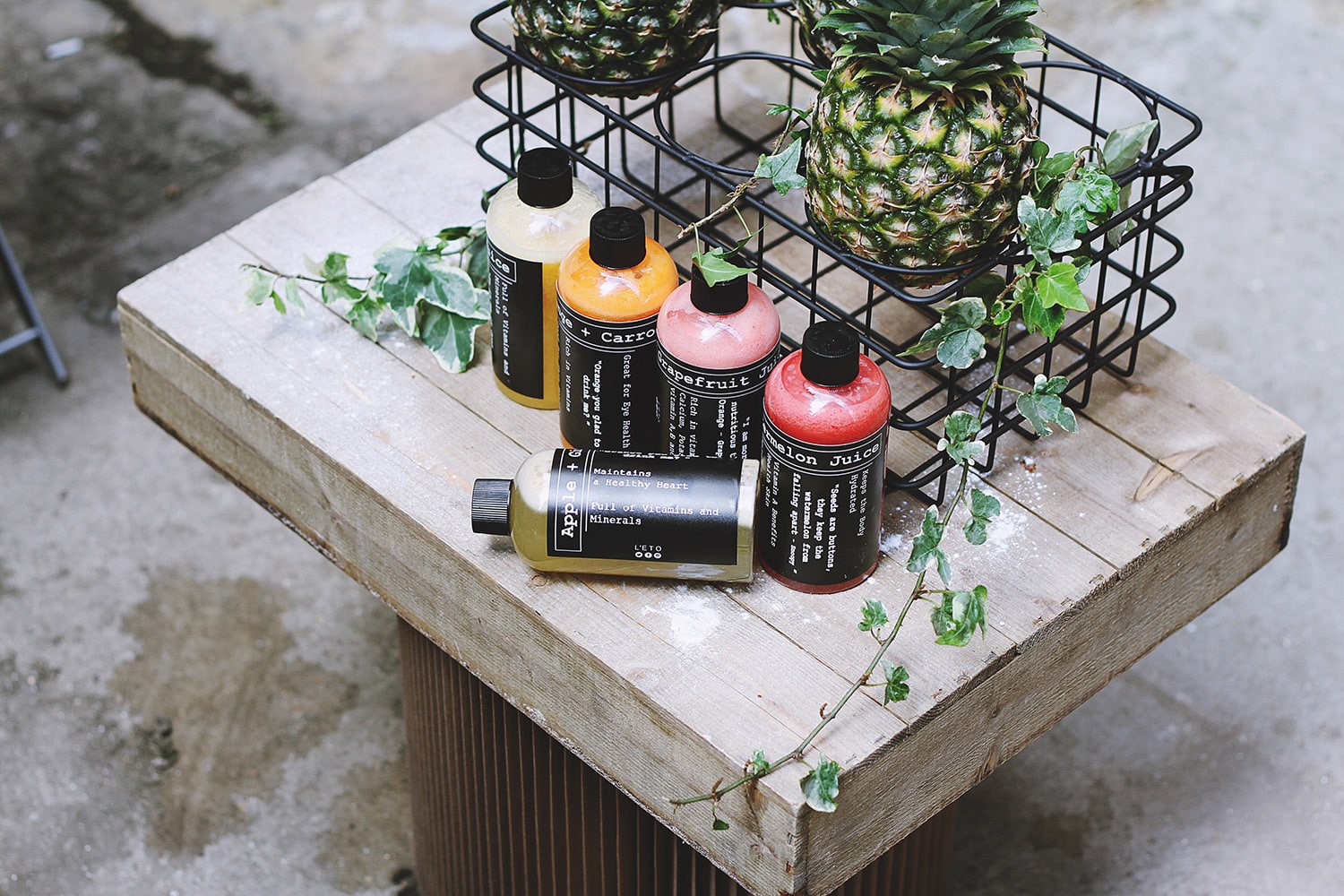We can all agree that sustainability is a noble goal. That said, is it possible to take “sustainable” messaging too far?
Let me ask you this; do you want your brand to be seen as a green-washing, virtue-signaling hall monitor?
Look, if you want to cut your sales in half then great, don’t bother reading the rest of this article.
But if you want to gain access to a high-income demographic, maintain trustworthiness, and actually do something good for the world, then let’s figure out how to have our cake and eat it too.
A Straight Talk Introduction to Bad Eco-Branding
In the neon-drenched, billboard-slapped battlefield of branding, “sustainable” is the new currency of cool.
But here’s the rub: slapping “eco-friendly” on your products is about as effective as a Band-Aid on a bullet wound if you’re not walking the walk.
It’s also a branding strategy that you can take way, way too far. You want customers happily buying your product instead of doing so racked with guilt, right? Let’s break this down.

The Risks: Greenwashing and Virtue Signaling
In the eco-arena of branding, there’s a breed of environmental evangelism that’s becoming a real buzzkill. It’s the kind of sustainable branding that’s less about making a difference and more about making you feel guilty for simply existing.
Here’s the deal: sustainability shouldn’t come with a side of shame.
Similarly, greenwashing can swiftly undermine customer trust, akin to the false allure of faux fur in the fashion world. When businesses claim eco-friendly credentials yet engage in environmentally harmful practices, it’s as incongruous as serving ‘nuclear sushi’—a clear betrayal of consumer expectations.
This misstep is not only transparent but also as unpleasantly conspicuous as a fart in a car, much like virtue signaling, which customers can detect and disdain just as easily.
Educate, Don’t Patronize
To foster a genuine connection with their audience, businesses should focus on enlightening their customers about sustainable branding. It’s not just about the polar bears; it’s about living on a planet that doesn’t look like a dumpster fire.
By educating rather than patronizing, companies can nurture a more informed and engaged consumer base, committed to the cause of sustainability.
Aiming for Authenticity in Sustainable Branding
Sustainable branding isn’t a trend; it’s the future playing out in real-time. The companies that get it right are the ones that don’t treat sustainability as a cosmetic upgrade or a sea foam-scented soap box to stand on, but as a foundational (and profit-rewarding) overhaul.
Sustainable branding is a conversation. It’s a back-and-forth, a give-and-take, not a monologue. Listen to your customers, take feedback, and make changes. It’s not rocket science; it’s just decent human interaction.

Rethinking the Approach: Sustainability Without the Scolding
- Enough With The Guilt Trips: Ditch the tactic of making customers feel like eco-sinners if they don’t buy your product. Sustainability isn’t about chastising; it’s about empowering.
- Remove The Hero Complex: Some brands cast themselves as the planet’s savior, suggesting, subtly (or not), that they care more than you do. Let’s flip the script. It’s not you vs. them; it’s all of us vs. the problem.
- Stop The Tired Tropes: “We’re in this together,” should be the mantra, replacing the tired trope of “We’re getting this right since no one else cares to.”
Messaging That Connects, Not Corrects
- The Empathy Angle: Acknowledge that being green can be tough, and offer practical solutions without the moral high ground.
- The Encouraging Tone: Cheer on the small steps your customers take. “Every bit helps, and we’re here to make it easier for you,” is the vibe we’re going for.
- The No-Shame Game: Sustainable branding can’t be about pointing fingers; it has to be about extending a hand.
So, as we bid adieu to the greenwashing gamble and virtue signaling veneer, let’s remember: sustainable branding at its heart is about connecting, not correcting. It’s about walking alongside your customers on the path to a greener future, not charging ahead and yelling over your shoulder.
Embrace the customers, embrace their efforts, and ditch the environmental elitism. After all, sustainable branding should be less about the moral high ground and more about common ground. That’s where real growth happens.

Crafting Authenticity: Sustainable Branding That’s Not Just Lip Service
True sustainable branding isn’t just a label; it’s the essence of your company’s story. Here’s how to make sure that your branding isn’t just a superficial nod to sustainability, but a testament to your brand’s authentic journey towards making a positive impact on the planet.
Aligning Your Brand Values with Real-World Actions
- Consistent Messaging: Ensure your brand’s sustainable messaging aligns with what your company actually practices.
- Quote to Live By: “Authenticity in sustainable branding isn’t a tactic; it’s a transparent reflection of your business values and actions.”
- Open the Books: Regularly report on environmental impact, progress, and setbacks. Honesty breeds loyalty.
- Story Behind the Stats: Use real-life narratives to illustrate your sustainability efforts – like how you redesigned a product to minimize waste.
- Embrace the Bold and True: “We’re on a sustainability journey with milestones and speed bumps, not just a joy ride on the eco-bandwagon.”
Building a Narrative That Resonates Without Exaggeration
- Genuine Engagement: Share stories that showcase your challenges and victories in sustainable practices – the more human, the better.
- Direct Customer Dialogue: Create platforms for open communication with your consumers about your sustainability efforts and encourage feedback.
- Be Proud, Not Loud: Something like “Our actions speak louder than words. Here’s what we’re doing, here’s what we’ve learned, and here’s where we’re going.”
Elevating Your Brand Through Collaborations and Certifications
- Strategic Partnerships: Join forces with organizations that can amplify your sustainability efforts and help you make a bigger impact.
- Verified Sustainability: Pursue certifications from recognized bodies to lend credibility to your sustainable branding efforts.
- The Credible Claim: “Every certification is a promise kept, a benchmark achieved in our ongoing commitment to sustainability.”
In every facet of your communication, let sustainable branding be a clear, credible narrative that speaks to a future your customers want to invest in. Whether it’s through product design, partnerships, or the very language you use, make sure that sustainability is not an afterthought but the thread that runs through the fabric of your brand’s identity.
Sustainable branding done authentically not only captivates the market but holds the power to shape it. It isn’t just about being seen as green; it’s about earning the badge and being a steward of the environment. As the focus shifts from simply selling to truly engaging with values, your brand can shine as a beacon of integrity in a market flooded with half-hearted claims.

How to Win Friends and Influence People, Sustainably
Educate Like You’re Sharing a Secret
When educating your customers on sustainability, approach it as if you’re letting them in on a well-guarded secret. Provide them with insider knowledge about sustainability—a kind of wisdom they can’t acquire from a simple Google search.
Personalize this information and pack it with impactful insights that resonate on a deeper level. Engage in a two-way conversation rather than delivering a one-sided speech. Imagine prompting your customer with a tidbit like, “Did you know our packaging can be composted right in your own backyard?” Such interactive exchanges can transform casual customers into passionate advocates for your brand.
The distribution of knowledge is not just about asserting power—it’s about building it communally. By sharing valuable information, you are not just enlightening an individual; you are empowering a collective. This strategy can elevate your brand from being a mere participant in the market to becoming a leader, one that is supported by a community that places immense value on substance and education over superficial gimmicks. Through this, your brand becomes not just a name, but a powerhouse with a dedicated following.
Earn Your Customer’s Loyalty
- Shared Values, Shared Spaces: Use social platforms to create forums where customers can share their green lifestyles, ask questions and discuss ways they’ve repurposed your product.
- Example: Sustainable shoe brand Allbirds has cultivated an engaged social media following where they share sustainability stories and encourage customer interaction.
- Subscription Models for Sustainability: Subscriptions for products that are sustainable by nature, such as zero-waste stores that offer package-free product deliveries, help build a routine and community around sustainability practices.
- Loyalty Programs with a Sustainable Twist: A brand could offer a discount on future purchases to customers who recycle old clothes.
- Example: Patagonia’s “Worn Wear” program encourages customers to trade in used gear for store credit, reinforcing the brand’s commitment to sustainability and encouraging a circular economy.
Trust is the cornerstone of any relationship, and in business, it’s no different. When consumers trust that a company is genuinely committed to sustainability, they don’t just open their wallets — they open their loyalty, and sometimes, their hearts.
Making Green by Being Green
- Loyalty is Lucrative: A customer who believes in your mission is a customer who comes back — and brings friends.
- The Referral Effect: “I trust Brand X’s commitment to protecting the planet, you should check them out!” That’s free marketing, straight from the heart.
- Profit Through Principles: When your principles are clear, your profits have a way of following suit. Being good to the planet is good for business.
In the end, sustainable branding isn’t a trick or a trend — it’s the future of commerce for a world that demands responsibility. Do it right, and you’ll find that doing good and doing well aren’t just compatible; they’re inseparable.
The Art of Earth-Friendly Messaging: Beyond Buzzwords
Checklist for Crafting Sustainable Language
- Chuck the Clichés: Toss out overused phrases like “eco-friendly” and “green” if they’re not backed by action. Words are cheap; show your receipts.
- Get Specific: Don’t just say “sustainable materials.” What materials? Why are they sustainable? What’s their impact? Educate with every label, every tagline, every post.
- Make It Relatable: Connect the dots between your sustainable practices and the customer’s daily life. “Our packaging? Turn it into a bird feeder.”
Crafting the Sustainable Story Visually
- Infographics: Break down your sustainability stats into digestible infographics. Make them so compelling that people can’t help but share.
- Visual Consistency: Your design elements should align with your sustainable ethos. Think recycled textures, earth tones, and imagery that inspires a connection to nature.
- Photography: Use real photos from your initiatives. Show the faces behind the products. Authenticity in imagery is just as important as in text.
- Functionality Meets Aesthetics: Your sustainable products should look good and do good. If your eco-friendly water bottle looks like a work of art, even better.
- Campaigns: From your website to your ads, the visual language should scream (not whisper) sustainability.
When it comes to sustainable branding, your message is only as good as the truth it tells and the engagement it sparks.
Ditch the buzzwords. Embrace clarity, specificity, and stories that stick. When your language aligns with your actions, you’re not just selling a product; you’re curating an experience, a choice, a stand against the throwaway culture. And in this art gallery of sustainable branding, every message is a masterpiece that can turn viewers into believers and believers into buyers.

Cashing in on Integrity: The Real ROI of Doing Right by the Planet
Targeting the Green Giants: The High-Income Demographic
- Find Your Tribe: High-income demographics aren’t just throwing cash at anything that glitters. They’re savvy, they’re conscious, and they’ve got a soft spot for the planet. Sustainable branding is your beacon.
- Speak Their Language: Craft your messaging to hit the sweet spot between luxury and responsibility. “Indulge in eco-luxury: good for you, good for the planet.”
- Success Story Spotlight: Look at Brand Z. They positioned themselves as the Tesla of kitchenware — sleek, sustainable, and covetable. Their ROI? Sky-high demand and a cult-like following from those with deeper pockets.
The Trust Formula
- Honesty as Policy: Trust isn’t just given; it’s earned by the sweat of your brow and the truth of your actions.
- The Trust Formula: Transparency + Consistency + Responsibility = A Brand That Sticks.
- Highlighted Win: Brand Y didn’t just promise; they delivered, and then showed their work. Their annual sustainability reports aren’t just data dumps — they’re storytelling sessions that turn customers into loyal fans.
The Hall of Fame for Sustainable Branding
- The Circular Success: Take Brand X. They went circular and made their products 100% recyclable. Customers don’t just buy; they buy in.
- From Trash to Cash: Brand Q turned ocean plastic into profit, making sunglasses out of sea garbage. Now, they’re a beacon of how sustainable branding can make waves and money.
- Highlighted Headline: “Brand W’s commitment to zero waste turns a tidy profit while cleaning up the streets.”
Cashing in on integrity isn’t a myth. It’s not a fairy tale. It’s the hard truth for brands that have the guts to go green authentically. Sustainable branding done right is not a cost; it’s an investment with dividends that go beyond dollars and cents.
Remember this: The real gold rush of our era isn’t in the hills; it’s in our hands, our hearts, and our capacity to give a hoot. That’s the real ROI of doing right by the planet.
The ROI of Sustainable Branding: Not Just a Feel-Good Factor
- Count the Tangibles: It’s not just about feeling good. It’s about the tangible benefits. Increased sales? Check. Reduced costs from more efficient practices? Double-check.
- Weigh the Intangibles: How’s your brand reputation doing? Are employees prouder to work for you? That’s the gold standard of ROI in the sustainable branding game.
- Are your sustainability efforts translating to customer loyalty?
- Are they helping you attract top talent?
Accountability in sustainable branding isn’t just a buzzword to slap on a glossy brochure. It’s a rigorous, relentless pursuit that requires you to stand naked in front of your stakeholders, warts and all. It’s about showing that you can walk through the fire of your own goals and come out on the other side with a story to tell.
So, as you crunch numbers and celebrate wins, remember this: the true measure of your brand’s eco-impact isn’t just in the data. It’s in the trust you build, the community you nurture, and the little part of the world you leave better than you found it.

Signing Off: A Recap for the Cynics and Hopefuls Alike
So, we’ve come full circle, winding down our little pow-wow on sustainable branding. Remember the eye-roll-inducing “green” campaigns we talked about? Or the overzealous virtue signaling that makes you want to sprint in the opposite direction? Yeah, let’s not do that.
Key Takeaways Without the Fluff
- Be the Real Deal: Your brand’s eco-credentials need to be as genuine as the reasons why you started your company in the first place. No facades, just real, measurable eco-action.
- Lead with Substance: Every sustainable step should be a step forward, not just for your image, but for the planet. Think long-term impact, not just immediate applause.
- Talk With Transparency: Cut through the noise with clear, jargon-free communication that tells it like it is, successes and slip-ups included.
Call-to-Action: The Sustainable Way
- Take a moment to look at your brand through a green lens. Is your sustainability commitment surface-level, or is it woven into the very fabric of your business model?
- Engage with your audience authentically. Ask them what they care about, involve them in your eco-efforts, and make them part of your sustainability story.
- Lastly, keep evolving. What’s cutting-edge today might be old news tomorrow. Stay alert, stay agile, and keep your sustainable edge sharp.
And for those lingering skeptics still on the fence, ponder this:
- Can real sustainability and profitability coexist? Absolutely — they’re not just friends; they’re becoming besties.
- Will consumers keep valuing sustainability? The trend lines don’t lie — they care, and their wallets follow their hearts.
- Is this sustainable branding thing just a fad? As much as smartphones and streaming. In other words, get on board or get left behind.
So there you have it. We’re not asking you to plant a forest single-handedly or to knit your own hemp business suits. All we’re saying is this: If you’re going to join the ranks of sustainable brands, make it matter.
Because when you do it right, sustainable branding isn’t just good for the planet — it’s good for business. Go out there and make a difference that matters.







